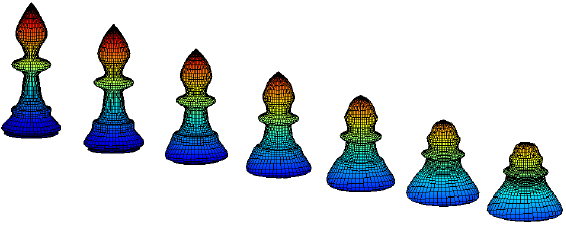Let $S_1$ and $S_2$ be two smooth, closed surfaces embedded in $\mathbb{R}^3$.
Q. Is there a natural definition of the optimal, conformal diffeomorphism between $S_1$ and $S_2$?
I am imagining $S_1$ and $S_2$ as points in a shape space, and I want to consider all diffeomorphisms between them that preserve angles throughout. I am wondering if there is a natural metric on this space that can select out the "optimal/shortest" path(s) between the two shapes.
Suggestive image:

(Image from "Shape Analysis of 3d Objects".)
This has surely been studied (in the cited paper above in one form). One can imagine using Ricci flow to map both $S_1$ and $S_2$ to canonical surfaces, and so connect them. But I am rather interested in a "shortest path" between $S_1$ and $S_2$, a sort of optimal Ricci-flow-like transformation of one surface to the other, without connecting via intermediate canonical forms.
(Added.) My apologies for the vagueness of this question. Just one more remark. My understanding is that Ricci flow for a surface in $\mathbb{R}^3$ is conformal, which was my motivation for concentrating on conformal diffeomorphisms. Essentially I am seeking a Ricci-like flow that morphs $S_1$ to $S_2$. But the comments have shown that my question is almost too naive in its current form to admit an answer.
